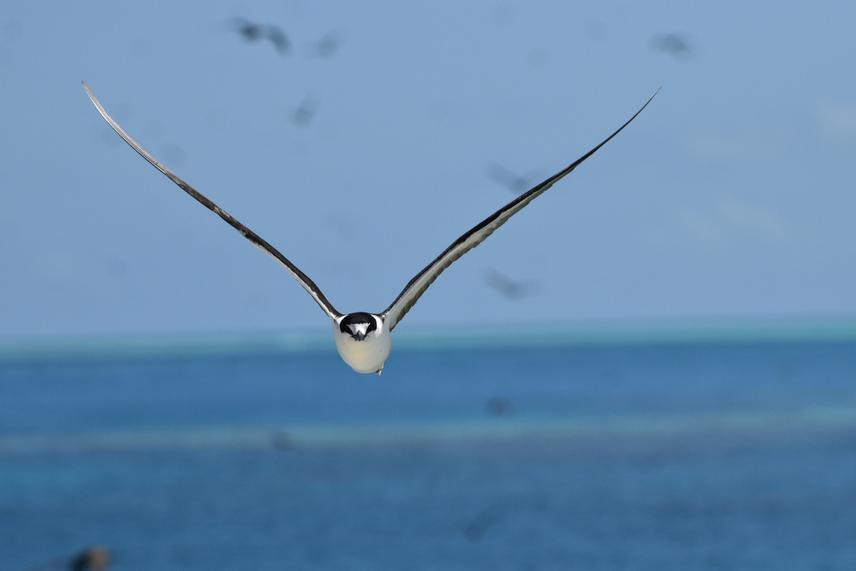Jennifer Appoo
The paramount role of seabirds as mobile links within coastal ecosystems is becoming increasingly acknowledged (Signa et al. 2021). On tropical coralline oceanic islands, isolated from mainland nutrient pools and surrounded by nutrient-poor waters, nutrient supply by seabirds becomes fundamental and underpins the functioning of island ecosystems (Beulow et al. 2018). Recent studies in the Indian and Pacific Oceans have shown that decline in seabird numbers significantly alters the functioning of threatened coastal ecosystems and consequently their resistance and resilience to global change and local anthropogenic disturbances (McCauley et al. 2012, Graham et al. 2018, Benkwitt et al. 2019, Benkwitt et al. 2021).

A sooty tern in flight © Annabelle Cupidon
Seychelles hosts a high biomass of seabirds. During the austral winter, over three million sooty terns breed on multiple islands throughout Seychelles (Le Corre et al. 2012). Sooty tern eggs are much-desired delicacy and have been harvested commercially since the 1920s (Feare & Doherty 2004). Despite implementation of harvesting regulations over the last decades, recent census indicates a nationwide decline in sooty tern populations (SNA 2021). To date, the national harvesting strategy has been guided mainly by demographic studies (Feare 1976, Feare & Lesperance 2002, Feare & Doherty 2004, Feare & Bristol 2013). Information on the role and ecological services of sooty tern breeding colonies in the functioning of threatened coastal ecosystems is needed to inform holistic management and policy-making decisions. My project aims to fill in this gap by defining the quality and quantity of nutrients delivered by sooty terns and investigating its impacts on threatened coastal ecosystems. The project will occur on the remote Farquhar Atoll, home to one of the largest and unharvested sooty tern colonies in Seychelles.
Through this project, I aim to inform and advise the sustainability of commercial sooty tern egg-harvesting in Seychelles. By communicating and disseminating the results of my research to the general public, managers and policymakers, I aim to raise awareness amongst the local population on the impacts of sooty tern egg harvesting.
Overall, this research project aims to improve understanding of local-scale connectivity processes within threatened coastal ecosystems on Seychelles’ seabird islands. In the context of global change, improving knowledge on baseline nutrient dynamics and how biodiversity shape ecosystem functioning, and stability is vital to recognize and predict how global change drivers will impact processes of threatened coastal ecosystem.
Header: Numerous sooty terns displaying above Goëlettes Island on Farquhar Atoll before commencing their 2022 breeding cycle © Jennifer Appoo.